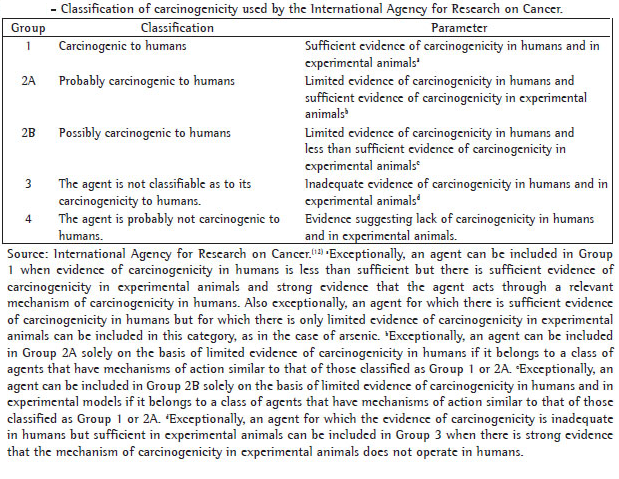Introduction
The present study critically focuses on the investigation and categorization of occupational carcinogens (Siemiatycki, Richardson, Straif, Latreille, Lakhani, Campbell, Rousseau & Boffetta, 2004). Prospective occupational carcinogen includes any material, or amalgamation or combination of materials, which results in an augmented prevalence of harmless and/or cancerous neoplasms, or a considerable shrinkage in the remission period between revelation and inception of neoplasms in humans or in one or more investigational mammalian species as the effect of any oral, respiratory or dermal exposure, or any other exposure which results in the stimulation of tumors at a situate other than the position of administration. This description also comprises any material which is broken down into one or more prospective occupational carcinogens by living things. These occupational carcinogens belong to a particular segment of human carcinogens. In their discovery the industrial atmosphere has been most instrumental (Siemiatycki et al., 2004).
The discovery of these types of carcinogens is important because their recognition can lead a way to prevent the hazardous occupational carcinomas largely seen in mammals. In subsequent years, many such occupational causes of cancer have been established through various epidemiological investigations but there are other substances also which are categorized as non-occupational carcinogens which have been established recently. The most important beneficial aspect of discovery of these occupational carcinogens is that such occupational carcinogens are very important in public health terms because of the potential for prevention through regulation and improvements in industrial hygiene practices (Doll & Peto, 1981). Large scale investigations are being carried out to find out the etiology of cancer and its potential risks in various industrial environments and hence it is very much important to amalgamate these scientific and experimental data for the betterment of community wellbeing intention. Although there are several records of carcinogens published by national and international academic organizations but a detailed and organized list of occupational carcinogens is still very much restricted because of the unambiguous and idiosyncratic nature of evidences (Siemiatycki et al., 2004). The major facts which are very often not included or not dealt seriously include a logical and articulated review of occupational carcinogens. There have been many disagreements related to the percentage of carcinomas which are caused by occupational exposures and the possible target situates of carcinomas. Hence it is very much necessary and important to discover, tabulate and organize the potential occupational carcinogens.
Listing of Occupational Carcinogens by International Agency for Research on Cancer (IARK)

According to Fig. 1, the International Agency for Research on Cancer (IARC) has classified the occupational carcinogens into 5 categories (International Agency for Research on Cancer, 1987). The objects are chosen by IARC through IARC Monograph program for further investigation based on two decisive factors:
- Human beings are exposed and
- There is prominent evidence to believe that the agent may be carcinogenic.
For classification of these carcinogens, IARC takes the help of an international working group of 15-30 experts who evaluate the substances based on four major criteria:
- Revelation and incidence of the stuffs which are investigated
- soul verification of malignancy threat
- Living thing carcinogenesis, and
- Additional information pertinent to the assessment of carcinogenicity and its system.
Fig.1 exhibits the grouping for the general investigation and how these agents have been evaluated from mammals, animals and rodents. The substances are grouped as cancer causing (group 1), most likely cancer causing (group 2A), perhaps cancer causing (group 2B), not identifiable (group 3), and most likely not cancer causing (group 4). But the parameters given in only pinpointing, and the expert group may obtain an in general assessment that head off from the stern construal of the criteria. The IARC categorization depends strongly on agreement, and is generally obtained, by contradictory judgment of the expert group.
Missing and Novel Information
Few important novel data which were missing and were not considered in the previous studies have been provided by the authors (Siemiatycki et al., 2004). The authors included few potential agents that were disqualified or in effect eradicated in some nations. These are mustard gas, bis(chloromethyl) ether, tris(2,3-dibromopropyl) phosphate, and 4,4´-methylene bis(2-chloroaniline) (MOCA), as well as auramine and magenta. These are some of the omitted materials that have been recognized and documented by the authors. To indicate the evolution of occupational carcinogens they have also included some recent novel agents which can act as occupational carcinogens. They have extracted almost 168 agents from the World Health Organization (WHO) report of 1964 that are presently regarded as specific, credible, or potential occupational carcinogens (World Health Organization, 1964). They have also compared the reports of WHO and IARC and suggested that almost half of the present day’s documented specific occupational carcinogens were already documented in the WHO report of 1964, in the early phase of disease epidemiology. Almost 90% of them were regarded to be unambiguous or plausible agents but almost more than 95% of present day’s credible and potential occupational carcinogens were not even documented in 1964. Thus the authors did a splendid job by providing some fresh comparative insights on occupational carcinogens thus practically contributing in the cancer epidemiology field of study.
References
Doll, R. & Peta, R. (1981). The Causes of Cancer. The Journal of the National Cancer Institute, 66, 1191-1308.
International Agency for Research on Cancer. (1987). Overall Evaluations of Carcinogenicity: An Updating of IARC Monographs. IARC Monogr Eval Carcinog Risk Chem Hum (suppl 7).
IARC Classification of Occupational Carcinogens [Image] (n.d.). Web.
Siemiatycki, J. R., Richardson, L., Straif, K., Latreille, B., Lakhani, R., Campbell, S., Rousseau, M. & Boffetta, P. (2004). Listing Occupational Carcinogens. Environmental Health Perspectives, 112, 1447-1459. Web.
World Health Organization. (1964). Prevention of Cancer: Report of a WHO Committee. Geneva: World Health Organization (Technical Report Series 276).